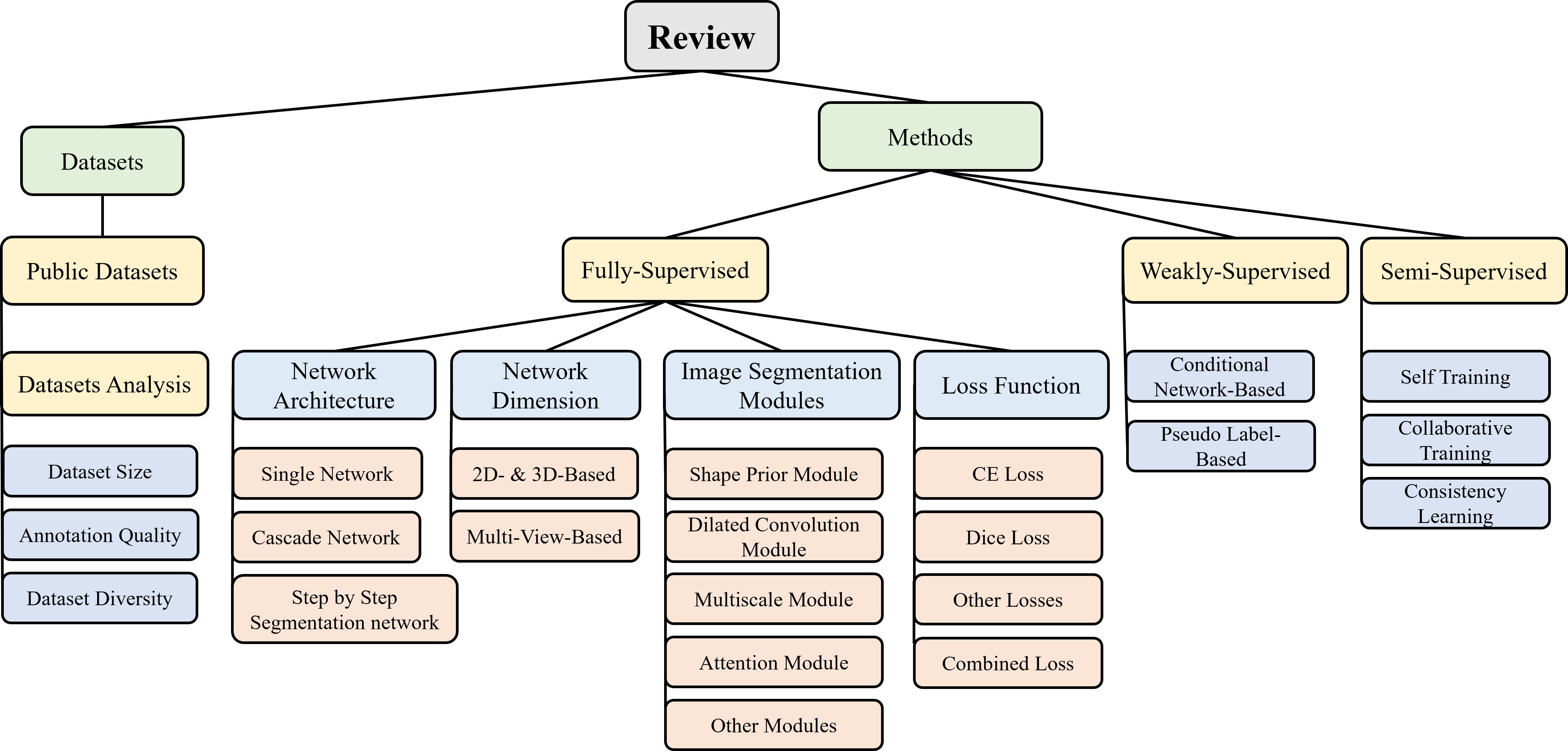

Towards more precise automatic analysis: a systematic review of deep learning-based multi-organ segmentation
Xiaoyu Liu*, Linhao Qu*, Ziyue Xie, Jiayue Zhao, Yonghong Shi†, Zhijian Song†
Biomedical Engineering Online (IF = 3.9)
Abstract
Accurate segmentation of multiple organs in the head, neck, chest, and abdomen from medical images is an essential step in computer-aided diagnosis, surgical navigation, and radiation therapy. In the past few years, with a data-driven feature extraction approach and end-to-end training, automatic deep learning-based multi-organ segmentation methods have far outperformed traditional methods and become a new research topic. This review systematically summarizes the latest research in this field. We searched Google Scholar for papers published from January 1, 2016 to December 31, 2023, using keywords "multi-organ segmentation" and "deep learning," resulting in 327 papers. We followed the PRISMA guidelines for paper selection, and 195 studies were deemed to be within the scope of this review. We summarized the two main aspects involved in multi-organ segmentation: datasets and methods. Regarding datasets, we provided an overview of existing public datasets and conducted an in-depth analysis. Concerning methods, we categorized existing approaches into three major classes: fully-supervised, weakly-supervised and semi-supervised, based on whether they require complete label information. We summarized the achievements of these methods in terms of segmentation accuracy. In the discussion and conclusion section, we outlined and summarized the current trends in multi-organ segmentation.
